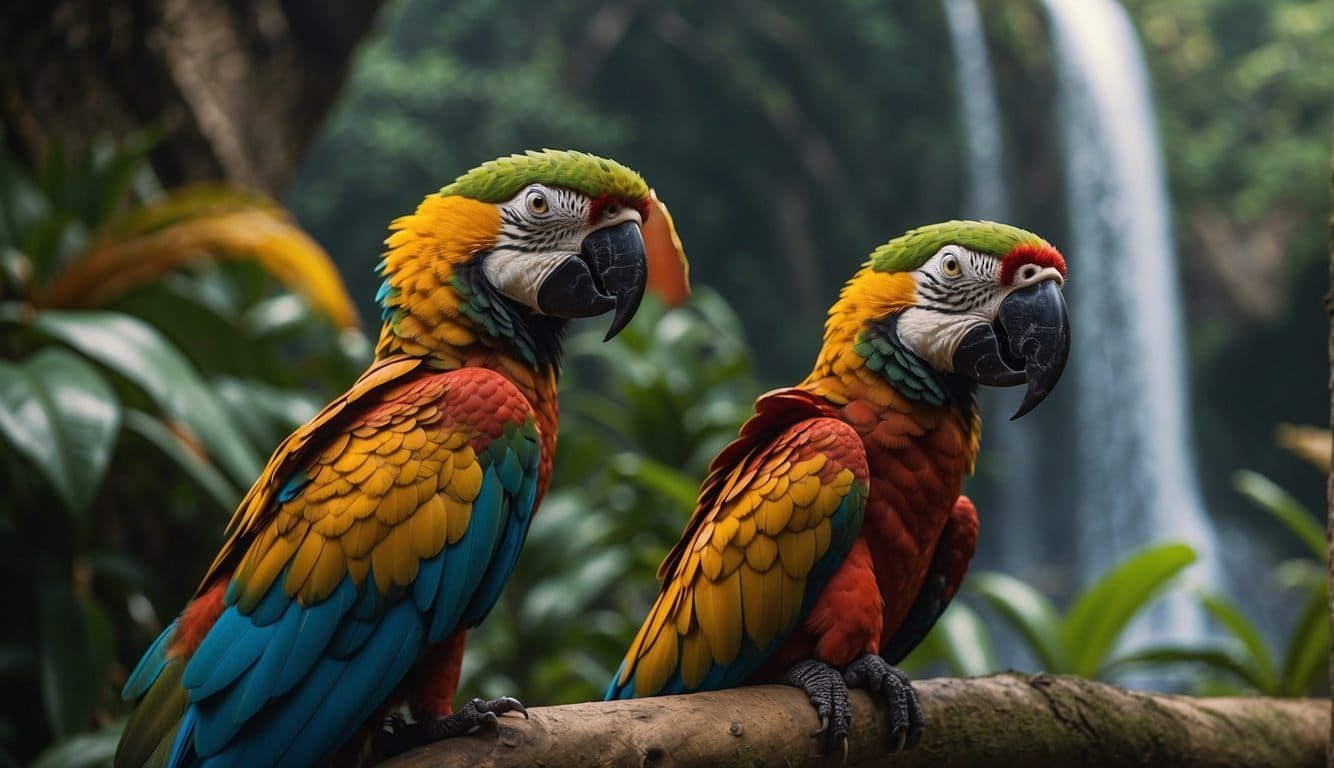Diversity of Mexican Fauna

Mexico’s vast landscapes are a mosaic of habitats, resulting in an impressive variety of fauna. From the dry deserts to the lush rainforests and extensive coastlines, the diversity is striking, with many species endemic to the country, including some that are amongst the world’s most unique and threatened animals.
Mammals in Mexico
Mexico is a sanctuary for a remarkable range of mammals. Iconic predators like the jaguar roam the forests, while the elusive ocelot shares its habitat. The Mexican wolf, smaller than its northern relatives, struggles for survival, teetering on the brink of extinction.
- Critically endangered species, such as the vaquita, a type of porpoise, face dire threats in the Gulf of California.
- Other mammals like the whimsical anteaters, hard-shelled armadillos, and forest-dwelling tapirs contribute to the country’s mammalian diversity.
Birds Across Regions
Mexico’s skies and trees are filled with a dazzling array of bird species. The Monarch Butterfly Biosphere Reserve is a well-known sanctuary for the Monarch butterfly during its migration, but it also serves as a habitat for various bird species.
- The country’s bird life ranges from the flamboyant motmots and tropical parrots to the quiet and unassuming, yet equally impressive, hummingbirds and songbirds.
Reptiles and Amphibians
Reptiles and amphibians thrive in Mexico’s diverse climates. Among them, various species of snakes slither through the underbrush, while lizards bask in the warm sun.
- The country’s herpetofauna is notable not just for its snakes but also for a myriad of amphibians like the rarely seen, but often heard, choices of frogs and salamanders, each with their own distinct calls that enliven the night.
- The critically endangered Mexican axolotl, a type of salamander, has amazed scientists with its ability to regenerate lost body parts.
By showcasing these remarkable creatures, one can appreciate the sheer variety and uniqueness of the fauna that Mexico has to offer.
Habitats and Geography

Mexico’s varied geography hosts a tapestry of habitats, from the dense rainforests in the south to the vast deserts in the north. Stretching from the Pacific Coast to the Gulf of Mexico, the country’s landscapes are pivotal for a rich diversity of ecosystems sustaining numerous Mexican animals.
Forests and Rainforests
The forests and rainforests of Mexico, like those found in Oaxaca and the humid montane regions of Mesoamerica, are crucial to preserving biodiversity, including the country’s national bird, the golden eagle. These areas often traverse the Sierra Madre mountain range and cover both tropical and temperate zones. Notably, the tropical forests support a vast number of species due to their high productivity and the myriad of ecological niches.
Deserts and Dry Areas
Deserts and dry areas, such as the Chihuahuan Desert, constitute another distinct biome. This landscape features an array of cactus species and is the home of unique fauna like the volcano rabbit. These arid regions extend into the Baja California peninsula and embody a stark contrast to the lush rainforests, yet they are equally rich in adapted wildlife and plant life.
Aquatic and Coastal Ecosystems
Mexico’s coastal ecosystems and wetlands, stretching along the Pacific Coast and the Gulf of Mexico, are imperative for many marine species and shorebirds. These regions connect the North and Central American geographies. Aquatic habitats here harbor an impressive range of biodiversity and are important for both Mexican animals and those migrating from the north aiming to spend the winter in warmer climates.
Conservation Challenges

Mexico’s rich biodiversity is under significant threat, and immediate conservation actions are pivotal to prevent irreversible losses. The nation is grappling with environmental changes that impact a range of species, from the most vulnerable to those already on the brink of extinction.
Endangered Species
Mexico is a sanctuary for an impressive variety of creatures, some of which are teetering dangerously close to extinction. The vaquita, the world’s smallest cetacean, is found only in the Gulf of California and is critically endangered due to illegal fishing practices. Over in Cozumel, the Cozumel splended toadfish is unique to the island and is facing habitat loss.
- Critically Endangered: Vaquita (Conservation Efforts)
- Cozumel Exclusive: Cozumel Splendid Toadfish (Species Specifics)
Environmental Threats
Environmental threats come in many forms, including habitat destruction and climate change, severely impacting the diverse ecosystems. In Chiapas, deforestation for agriculture and infrastructure development is shrinking the habitats of indigenous species, while in Puebla, unchecked urban expansion introduces pollution and further threatens the local fauna.
- Habitat Destruction: Chiapas and Puebla regions (Habitat Loss)
- Climate Change Impact: Biodiversity loss across Mexico (Climate Challenges)
Conservation Efforts
Thankfully, there are numerous conservation efforts underway to combat these challenges. On the Baja California Peninsula, initiatives to reduce livestock and feral animal populations help restore natural balances. Moreover, projects aiming to eradicate invasive mammals from the islands of western Mexico showcase high-impact conservation movements.
- Baja California Initiatives: Reducing livestock impacts (Conservation Actions)
- Invasive Species Control: Efforts in western Mexico’s islands (Eradication Programs)

